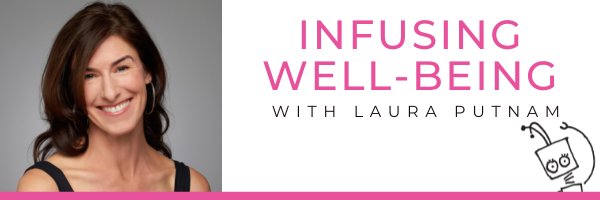|
Every August, I travel to a remote island in Maine for our family vacation. This annual ritual of disconnecting from technology and reconnecting with the natural world is what keeps me sane. How do you keep your sanity in an Always-On Culture? Or, consider this: If you were to describe your life as a ladder, which step would you say that you are on (on a scale from 0-10)? How about in 5 years from now? This is a measure that is often used to determine where people are on the spectrum from suffering to struggling to thriving. And, what scientists are seeing is that the number of Americans who are suffering right now is at record highs. As measured by Gallup, 5.6% are considered “suffering” on the Life Evaluation Index, the highest since the index’s inception in 2008. This index, based on the so-called Cantril Self-Anchoring Striving Scale, classifies people into three categories: thriving, struggling or suffering. The biggest drivers in this spike in suffering are fallout from the pandemic, fear of an impending recession that looms on the horizon, a plunge in moral grounding and the steady beat of being in an always-on world. As Einstein reminded us: “The definition of insanity is doing the same thing over and over and expecting different results.” Trying to keep up with an Always-On Culture – at work, outside work and everywhere in between – is, by definition, insane. Now, people are fighting back, saying “No” to the Always-On Culture. Put another way: the pot has boiled over and people are getting out. Starting in April of 2021, people began quitting their jobs in record numbers, averaging 4 million a month. This is happening not only with employees, but also with managers and even top leaders. In fact, according to a recent Deloitte report, 70% of CEOs are considering quitting. 2022 is shaping up to be the year of “Quiet Quitting," a term coined by TikTokker @zkchillin earlier this year. As he described in a video that went viral, Quiet Quitting is “not outright quitting your job, but you’re quitting the idea of going above and beyond.” He elaborated with, “You’re still performing your duties, but you’re no longer subscribing to the hustle culture mentality that work has to be your life — the reality is, it’s not.” So, what can we do as individuals, as organizations, and perhaps most importantly, as teams? This is exactly what I explored in my LinkedIn Live conversation with Jen Fisher, Chief Well-Being Officer at Deloitte. Here are some of the top takeaways from our conversation: 1. Individuals – As individuals, we can prioritize our self-care, which includes taking real vacation time – something that we struggle with as Americans. As Courtney Vinopal put it in a recent article, “Americans are bad at taking vacation.” We take a full six days fewer vacation days than the global average, which is 18, according to Expedia’s latest Vacation Deprivation study. And, unlike our European counterparts, the US is the only advanced economy that doesn’t mandate paid vacation. Moreover, a recent poll from Fishbowl by Glassdoor found that over half of working professionals never fully unplug during vacation time. So, as an individual, you can fight back by taking a real vacation (just like the one shown above)! 2. Organizations – Jen Fisher describes the need for “people first, systems second.” Now’s the time for every organization, with leaders at the helm, to humanize the workplace. 3. Teams – Changing the culture across an organization, especially if it’s a large one, can be a lot like trying to redirect an ocean liner. Teams, on the other hand, represent “mini-systems” within the organization. As Paula Davis, founder and CEO of the Stress & Resilience Institute and author of “Beating Burnout at Work: Why Teams Hold the Secret to Well-Being and Resilience,” described in a recent podcast interview with Jen, “If we can get enough teams going in the right direction, then that can create a ripple effect across the organization as a whole.” In this same interview, Paula went on to describe how “Change becomes more doable” when it happens on the team level. I couldn’t agree more. Here is exactly where I’ve been focusing my efforts for the past 10 years with Managers on the Move, a leadership-meets-wellness training program. Ultimately, it’s about how we can promote “for-real” well-being, and how we can work together to ensure that we are all well. This deeper sense of well-being is not just about kale, it’s about care. CHECK OUT MY LIVE CONVERSATION WITH JEN FISHER ON THIS VERY TOPIC!
0 Comments
Leave a Reply. |
Follow laura on social:Website by Brand Genie
|
join laura's monthly newsletter
|





